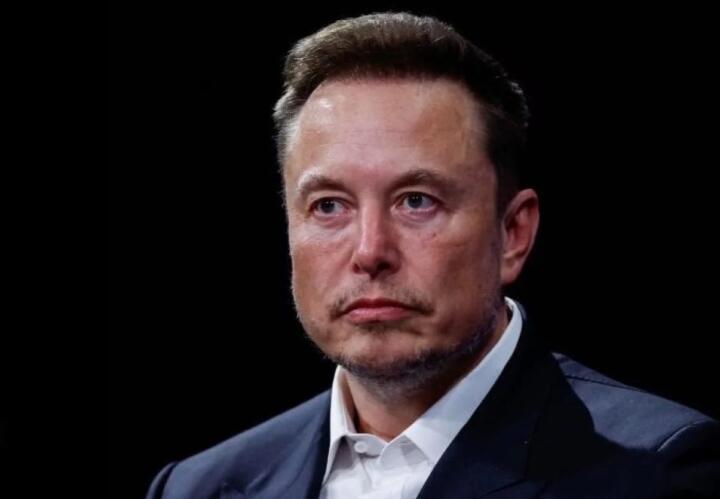Elon Musk has officially unveiled Tesla’s highly anticipated self-driving robotaxi, marking a monumental leap forward in the company’s journey toward autonomous vehicle technology. This innovative robotaxi is set to redefine how we think about transportation, offering a vision of a future where cars can operate without any human intervention.
The vehicle, powered by Tesla’s advanced Full Self-Driving (FSD) technology, is designed to navigate roads, respond to traffic signals, and transport passengers safely, all without the need for a driver.
Musk has long teased the concept of a Tesla robotaxi as part of his vision to create a sustainable, autonomous transportation network. This unveiling brings that vision closer to reality. The Tesla robotaxi comes equipped with a state-of-the-art suite of cameras, sensors, and AI-driven software, allowing it to process vast amounts of real-time data to make split-second decisions on the road. The vehicle is capable of recognizing obstacles, pedestrians, and other cars, ensuring a safe and efficient journey from point A to point B.

One of the most striking aspects of the robotaxi is its fully autonomous design, which removes the need for traditional driving controls. The vehicle has no steering wheel or pedals, highlighting Tesla’s confidence in the capabilities of its FSD system. This minimalist, driverless interior is a clear statement of Tesla’s belief that human-driven cars may soon become a thing of the past.
The robotaxi is more than just a technological innovation; it represents a fundamental shift in how cities may function in the near future. Musk has positioned the robotaxi as a solution to a number of critical urban challenges. For one, it addresses the issue of traffic congestion. With fleets of self-driving vehicles efficiently navigating through city streets, the need for individual car ownership could significantly decline. Instead, people could summon a robotaxi on demand, reducing the number of cars on the road, streamlining traffic, and alleviating the strain on city infrastructure.
Musk also emphasized the environmental benefits of the robotaxi. As a fully electric vehicle, the robotaxi aligns with Tesla’s broader mission to accelerate the world’s transition to sustainable energy. By reducing the need for gasoline-powered vehicles and promoting shared transportation, Tesla’s robotaxi could play a key role in lowering greenhouse gas emissions and combating climate change.
Furthermore, the robotaxi offers a more affordable alternative to traditional transportation methods. By reducing the reliance on privately owned vehicles and offering rides on demand, Tesla aims to lower the overall cost of transportation for consumers. In Musk’s vision, people could use a Tesla robotaxi at a fraction of the cost of owning, maintaining, and insuring a personal vehicle. This affordability, combined with the convenience of an autonomous ride-hailing service, could make robotaxis a dominant force in the transportation sector.
Tesla’s move into the robotaxi space is not just about offering a new product; it represents a bold step toward fully autonomous ride-hailing services. This development aligns with Musk’s long-term goal of creating a network of Tesla-owned and privately owned robotaxis that can be summoned via an app, similar to how ride-hailing services like Uber and Lyft currently operate—but without the need for a human driver. Tesla owners could even send their own cars into the robotaxi fleet when not in use, earning income while their vehicles provide rides to others.
The launch of Tesla’s robotaxi also signals the company’s growing confidence in its Full Self-Driving technology. While Tesla’s FSD has been in development for several years, the release of a vehicle designed specifically for autonomous operation suggests that Tesla believes it has overcome many of the technological and regulatory challenges that have slowed the adoption of self-driving cars. Musk has previously mentioned that regulatory approval is one of the final hurdles for wide-scale deployment of autonomous vehicles, and Tesla is working closely with regulators around the world to bring the robotaxi to market.
However, the road to widespread adoption of the Tesla robotaxi won’t be without its challenges. Autonomous vehicle technology is still evolving, and there are significant regulatory, safety, and infrastructure issues that need to be addressed before robotaxis can become a common sight on city streets. Public acceptance of self-driving technology is another potential hurdle, as many consumers still harbor concerns about the safety and reliability of autonomous vehicles.
Despite these challenges, Musk remains optimistic. He believes that once people experience the convenience, efficiency, and affordability of the robotaxi, they will quickly embrace the technology. Tesla’s commitment to continuous improvement through over-the-air software updates also means that the robotaxi will only get better over time, with enhancements to safety features, navigation, and overall performance.
The unveiling of Tesla’s self-driving robotaxi marks a pivotal moment in the evolution of transportation. It showcases the company’s cutting-edge technology while offering a glimpse into a future where fully autonomous, electric vehicles are the norm. Musk’s vision of a cleaner, more efficient, and more affordable transportation system is moving closer to reality, with the robotaxi poised to play a central role in that transformation.
As Tesla continues to push the boundaries of what’s possible in autonomous driving, the robotaxi is just the beginning of a new era in mobility. Whether it’s reducing urban congestion, lowering carbon emissions, or making transportation more accessible to everyone, the Tesla robotaxi has the potential to revolutionize the way people move in cities across the globe. And with Musk at the helm, it’s clear that Tesla intends to lead the charge into this new frontier.
Support InfoStride News' Credible Journalism: Only credible journalism can guarantee a fair, accountable and transparent society, including democracy and government. It involves a lot of efforts and money. We need your support. Click here to Donate
